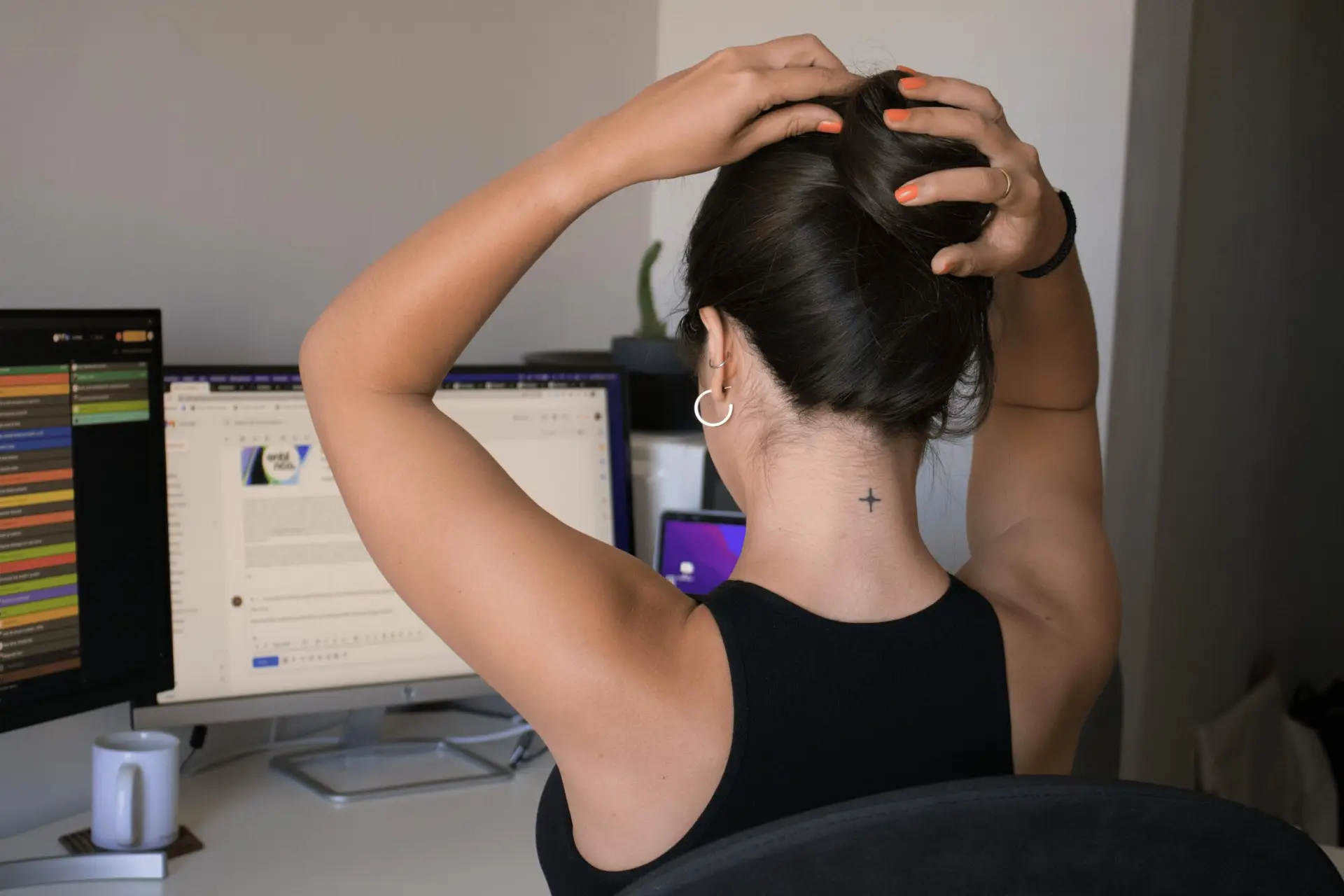
Barometric Pressure Changes in Sarasota and Bradenton Florida. Millions of people experience headaches, joint aches, dizziness, or sinus discomfort when the weather shifts. For residents of Sarasota and beyond—Bradenton, Lakewood Ranch, Venice, Parrish, Punta Gorda, and St. Petersburg—barometric pressure changes can mean canceled plans, missed workdays, and days spent in pain. At Lavender Family Chiropractic, your trusted upper cervical chiropractic clinic in Sarasota, Florida, we specialize in pinpointing how drops and rises in barometric pressure trigger symptoms via misalignments in the atlas (C1) and axis (C2) vertebrae. Using 3D CBCT imaging, functional nervous system scans, and our gentle, instrument-free AHKC technique (no twisting, popping, or yanking), we help you build resilience—so you’re prepared for any forecast.
Whether you’ve Googled “chiropractor Sarasota Florida,” “chiropractor near me,” “upper cervical chiropractor near me,” “Vertigo doctor near me,” or “Migraine doctor near me,” this guide is for you. Dive deep into the science, discover actionable strategies, and learn why Lavender Family Chiropractic is the premier choice for weather-proof wellness.
Table of Contents
- Understanding Barometric Pressure: Basics & Measurement
- The Science of Weather Fronts & Pressure Systems
- Physiological Effects of Barometric Fluctuations
- Joint Capsule Expansion & Pain
- Cranial Blood Flow & Headaches
- Vestibular Fluid Shifts & Dizziness
- Sinus Pressure & Ear Discomfort
- Autonomic Nervous System Dysregulation
- Anatomy Spotlight: The Upper Cervical Spine (C1 & C2)
- Mechanisms: How Atlas/Axis Misalignments Amplify Weather Sensitivity
- Diagnostic Precision: 3D CBCT Imaging Explained
- Nervous System Insight: Functional Scans (Thermography & sEMG)
- The AHKC Technique: Gentle, Precise Upper Cervical Adjustments
- Clinical Protocol: What to Expect on Your First Visit
- Case Studies: Real-World Weather-Related Relief
- Integrative Self-Care: Nutrition, Exercise, & Lifestyle
- Seasonal Strategies: Preparing for Stormy & Dry Seasons
- Long-Term Maintenance: Stability & Prevention
- Why Lavender Family Chiropractic Is Your Best Choice
- Scheduling & Insurance: How to Book & What to Expect
- Top 15 FAQs: Barometric Pressure & Upper Cervical Chiropractic
- Conclusion: Take Control of Your Comfort
1. Understanding Barometric Pressure Changes: Basics & Measurement
Barometric pressure, also called atmospheric pressure, is the weight of the air column pressing on Earth at any point. It’s measured in inches of mercury (inHg) or millibars (mb). Standard sea-level pressure is about 29.92 inHg (1013 mb), with daily fluctuations of 0.1–0.3 inHg often triggering symptoms in sensitive individuals.
- High-pressure systems (>30.2 inHg / 1023 mb) generally bring clear skies and stable weather.
- Low-pressure systems (<29.8 inHg / 1008 mb) often precede rain, storms, or wind.
- Rapid drops of just 0.2–0.3 inHg in a few hours can provoke migraines, joint pain, or dizziness.
Barometers, whether analog, digital, or integrated into weather stations, track these shifts. Many patients monitor local forecasts in Sarasota to anticipate symptom flares—but true prevention comes from addressing the root: upper cervical misalignments that magnify barometric effects.
2. The Science of Weather Fronts & Pressure Systems
Weather fronts mark the boundary between different air masses:
- Cold fronts usher in cooler, denser air, often causing rapid pressure rises.
- Warm fronts introduce warmer, lighter air, typically accompanied by gradual pressure drops.
- Occluded fronts and stationary fronts can bring prolonged periods of low pressure and unsettled weather.
When a cold front pushes under a warm front, it forces warm air skyward, cooling it and creating precipitation. These dynamics cause pressure and humidity fluctuations that stress the body’s fluid and vascular systems.
In Florida’s Gulf Coast region—including Bradenton, Parrish, and Venice—sea breeze fronts can also produce dramatic local pressure shifts as land and sea temperatures interact. Understanding these patterns helps us time adjustments and self-care strategies to minimize weather-related discomfort.
3. Physiological Effects of Barometric Fluctuations
Barometric shifts impact multiple systems:
3.1 Joint Capsule Expansion & Pain
Lower outside pressure allows joint capsules and surrounding soft tissues to expand. In joints already under stress—due to osteoarthritis, injury, or spinal misalignment—this expansion irritates mechanoreceptors, leading to achy sensations.
- Synovial fluid viscosity can change, affecting lubrication.
- Capsular stretch activates pain fibers.
3.2 Cranial Blood Flow & Headaches
Cerebral blood vessels respond to pressure changes through vasodilation or vasoconstriction. A sudden drop in barometric pressure often triggers vasodilation, increasing intracranial blood volume and pressure. This stimulates trigeminal nerve endings, releasing neuropeptides (like CGRP) that initiate migraine cascades.
3.3 Vestibular Fluid Shifts & Dizziness
The inner ear’s semi-circular canals contain endolymph fluid critical for balance. Rapid external pressure drops can’t be equalized quickly via the Eustachian tube, leading to transient pressure differentials that manifest as dizziness or vertigo.
3.4 Sinus Pressure & Ear Discomfort
Sinus cavities and middle-ear spaces require pressure equalization. When outside air pressure falls sharply, negative pressure develops inside these cavities, causing pain, “blocked” sensations, and fluctuating hearing.
3.5 Autonomic Nervous System Dysregulation
Barometric changes are potent stressors. Weather-sensitive individuals often have a hyper-reactive autonomic nervous system (ANS), in which the sympathetic (“fight-or-flight”) response is easily triggered—resulting in muscle tension, elevated heart rate, and amplified pain perception.
Key Insight: The craniocervical junction—the atlas/axis region—is directly adjacent to the brainstem’s autonomic centers. Misalignments here exaggerate every barometric effect.
4. Anatomy Spotlight: The Upper Cervical Spine (C1 & C2)
4.1 Atlas (C1)
- Ring-shaped bone supporting the skull.
- Enables the “yes” nod.
- Houses the atlanto-occipital joint.
4.2 Axis (C2)
- Features the odontoid process (“dens”) that forms the pivot for rotation.
- Facilitates the “no” shake via the atlanto-axial joint.
Beneath these vertebrae sits the brainstem, including the medulla oblongata and upper spinal cord—critical hubs for autonomic regulation, respiratory centers, and proprioceptive integration.
4.3 Why C1/C2 Matter for Weather Sensitivity
- CSF Flow: Cerebrospinal fluid must flow freely around C1/C2. Even sub-millimeter misalignments disrupt this flow, magnifying intracranial pressure shifts during low-pressure events.
- Vertebral Arteries: Pass through transverse foramina in C1/C2. Misalignments can stretch or compress these arteries, reducing cerebral perfusion precisely when vessels need to adapt to external pressure changes.
- Nociceptive Nerve Roots: Irritated C1/C2 nerve roots heighten overall pain sensitivity, turning minor atmospheric shifts into major symptom triggers.
5. Mechanisms: How Atlas/Axis Misalignments Amplify Weather Sensitivity
5.1 Obstructed CSF Dynamics
When C1 or C2 subluxates even 0.5 mm, CSF flow can bottleneck, lowering the fluid’s cushioning effect. Barometric drops then cause more pronounced intracranial pressure swings, leading to tension headaches and migraines.
5.2 Altered Vertebral Artery Function
During low-pressure conditions, cerebral vessels dilate. If a misalignment pinches a vertebral artery, vessels downstream can’t expand, generating pressure differentials that irritate arterial walls and surrounding nerve tissues—triggering migraines and lightheadedness.
5.3 Amplified Nociception
Chronic subluxations at C1/C2 maintain the nervous system in sympathetic overdrive. A hyper-tensed cervical musculature and irritated dorsal root ganglia increase baseline pain, making the body overreact to small environmental stressors.
5.4 Vestibular-Proprioceptive Mismatch
Upper cervical misalignments skew proprioceptive feedback from neck muscles and joints to the brainstem. Combined with inner-ear pressure mismatches, this dual disruption precipitates vertigo, dizziness, and balance disturbances.
6. Diagnostic Precision: 3D CBCT Imaging Explained
3D Cone Beam Computed Tomography (CBCT) offers three-dimensional radiographic imaging of craniofacial and cervical structures with sub-millimeter accuracy—far surpassing traditional 2D X-rays.
- Sub-millimeter Measurement: Detects C1/C2 misalignments as small as 0.2 mm in any plane.
- Low Radiation Dose: Comparable to or lower than standard dental X-rays.
- Detailed Bone Visualization: Reveals bony spurs, asymmetries, and joint degeneration.
- Customized Adjustment Planning: Determines vector, angle, and force direction for each patient’s unique anatomy.
At Lavender Family Chiropractic, on-site CBCT ensures we don’t guess—every adjustment is mapped to your specific alignment needs.
7. Nervous System Insight: Functional Scans (Thermography & sEMG)
Objective assessment of nerve function and muscle tone complements CBCT imaging.
7.1 Infrared Thermography
- Heat Asymmetry Detection: Inflammation or autonomic imbalance shows as skin temperature differences along the cervical paraspinal region.
- Mapping Neurological Interference: Colder areas may indicate reduced blood flow from nerve compression; warmer areas suggest inflammation.
7.2 Surface Electromyography (sEMG)
- Muscle Tone Analysis: Measures electrical activity of paraspinal muscles.
- Hypertonicity Identification: High readings highlight muscles compensating for underlying subluxations.
- Baseline & Progress Tracking: Scans pre- and post-adjustment quantify improvements in muscle relaxation and nervous system balance.
These scans create a feedback loop: we adjust, then immediately re-scan to confirm objective neurological improvements—ensuring each visit delivers measurable results.
8. The AHKC Technique: Gentle, Precise Upper Cervical Adjustments
Our signature Advanced HIO Knee-Chest Upper Cervical (AHKC) Technique embodies three pillars:
- Data-Driven Precision: Adjustments guided by CBCT vectors, ensuring contact at the exact misalignment point.
- Objective Feedback: Functional scans before and after confirm nerve decompression.
- Minimal Force, Maximum Impact: Manual, instrument-free impulses—no twisting, popping, or yanking.
8.1 Why Gentle Matters
- Patient Comfort: Avoids pain flare-ups in weather-sensitive individuals.
- Reduced Risk: Eliminates undue stress on cervical joints, ligaments, and vertebral arteries.
- Longer-Lasting Corrections: Precision allows the body’s muscles and fascia to adapt gradually, maintaining alignment longer.
8.2 Adjustment Protocol
- Preparation: Patient lies prone on a specialized knee-chest table.
- Vector Alignment: Practitioner aligns hands per CBCT-determined vector.
- Impulse Delivery: A brief, precise thrust—often barely perceptible—realigns C1 or C2.
- Immediate Verification: Thermography and sEMG scans confirm reduced interference.
Most patients describe the experience as relaxing rather than painful—and many report immediate relief from headaches, dizziness, or neck stiffness.
9. Clinical Protocol: What to Expect on Your First Visit
- Comprehensive Intake: Detailed health history, symptom journal, and lifestyle review.
- Physical Examination: Posture, range of motion, and neurological reflex tests.
- CBCT Imaging: On-site 3D scan of the craniovertebral junction.
- Functional Scans: Infrared thermography and sEMG mapping.
- Personalized Report: Visual and verbal explanation of misalignments and scan findings.
- First Adjustment: Gentle AHKC correction, followed by immediate post-scan.
- Home Care Plan: Customized exercise, hydration, nutritional, and mindfulness recommendations.
- Follow-Up Schedule: Typically 2–3 visits over four weeks to fine-tune alignment, then transition to maintenance care.
Duration: Expect a 60–75 minute initial appointment, and 30 minutes for follow-ups.
10. Case Studies: Real-World Weather-Related Relief
Case Study 1: Storm-Triggered Migraines
- Patient: 45-year-old female, lifelong migraines intensifying before every tropical storm.
- Baseline: 3–4 severe migraines/month (7–8/10 pain), unresponsive to triptans.
- Intervention: Two C1 adjustments over four weeks.
- Outcome: 70% reduction in migraine frequency and severity—even during Category 1 storm pressure dips—for nine months post-care.
Case Study 2: Seasonal Neck & Shoulder Pain
- Patient: 52-year-old landscaper, severe neck/shoulder stiffness in rainy season.
- Baseline: 5–7/10 pain, 30° limited rotation when pressure <29.8 inHg.
- Intervention: Three C2 corrections over six weeks + targeted home exercises.
- Outcome: Pain dropped to 1–2/10, full range of motion preserved through two rainy seasons.
Case Study 3: Vestibular Dizziness Relief
- Patient: 30-year-old teacher, episodic vertigo before thunderstorms.
- Baseline: 2–3 dizziness spells/month, 10–20 minutes each.
- Intervention: Single atlas correction confirmed by CBCT.
- Outcome: Complete cessation of vertigo attacks for 10 months—even during record low-pressure events.
11. Integrative Self-Care: Nutrition, Exercise, & Lifestyle
Upper cervical care is powerful—but combining it with supportive habits maximizes resilience to weather shifts:
11.1 Nutrition & Supplementation
- Hydration: Drink half your body weight (in ounces) of water daily.
- Electrolytes: Include magnesium (200–400 mg nightly) and potassium-rich foods (bananas, avocados).
- Omega-3s: Anti-inflammatory benefits support nerve health.
- Vitamin D & B12: Maintain neurological function and mood stability.
11.2 Gentle Cervical Mobility Exercises
- Chin Tucks: 10–15 reps, hold 5 seconds.
- Side-Bends: Ear to shoulder, 5 reps each side.
- Rotation: Slow head turns, 5 reps each direction.
Perform daily, especially before predicted weather changes.
11.3 Warm-Cold Contrast Therapy
- Alternate warm compress (3 minutes) with cold pack (1 minute), 3–4 cycles on neck before storms.
11.4 Mind-Body Practices
- Diaphragmatic Breathing: 5 minutes/day to activate parasympathetic tone.
- Progressive Muscle Relaxation: 10–15 minutes, reduce sympathetic overdrive.
- Guided Imagery or Meditation: Manage stress and pain perception.
12. Seasonal Strategies: Preparing for Stormy & Dry Seasons
12.1 Pre-Storm Checklist
- Schedule an upper cervical tune-up when forecast shows a drop below 29.8 inHg.
- Increase hydration and electrolyte intake 48 hours before.
- Perform mobility and contrast therapy routines daily.
12.2 Dry Season Care
- Lower humidity can stiffen tissues—continue mobility exercises year-round.
- Maintain regular chiropractic check-ups every 6–8 weeks during dry spells.
12.3 Travel & Altitude Changes
- When traveling to higher altitudes, schedule a consultation within 24 hours of arrival to assess new pressure environment.
13. Long-Term Maintenance: Stability & Prevention
After achieving stable alignment, transition to a maintenance program:
- Visits: Every 6–12 weeks, based on symptom frequency.
- Home Exercises: 5–10 minutes daily of chin tucks, side bends, and rotations.
- Lifestyle: Continue hydration, nutrition, and mind-body practices.
- Monitoring: Use a barometric app to anticipate low-pressure events and preemptively perform self-care or schedule a quick check.
This proactive approach minimizes symptom flares and supports lasting wellness.
14. Why Lavender Family Chiropractic Is Your Best Choice
- Leading Upper Cervical Chiropractor in Sarasota, Bradenton & Lakewood Ranch: Our AHKC technique is recognized for delivering reliable, gentle results.
- Advanced On-Site Technology: 3D CBCT, infrared thermography, and surface EMG for data-driven care.
- No Instruments, No Twisting, No Cracking: Only precise manual adjustments.
- Holistic Support: Nutritional guidance, posture coaching, and personalized home care.
- Collaborative Care: Coordination with your physician, ENT specialist, or physical therapist when needed.
- Flexible Payment & Financing: Out-of-network superbills, multiple payment plans, and financing options.
Service Areas: Bradenton, Parrish, Lakewood Ranch, Ellenton, Venice, Osprey, Punta Gorda, St. Petersburg, Siesta Key, Longboat Key, Lido Key, Myakka City.
15. Scheduling & Insurance: How to Book & What to Expect
- Book Online: Visit www.chiropractorsarasotaflorida.com and select “Book Appointment.”
- Phone: Call (941) 243-3729 for personal assistance.
- Location: 5899 Whitfield Ave Ste 107, Sarasota, FL 34243.
- Hours: Mon–Fri 8 AM–6 PM; Sat by appointment.
Our office is out of network with insurance. Most patients receive a superbill to submit for reimbursement. We also offer flexible payment options and financing to make care accessible.
16. Top 15 FAQs: Barometric Pressure & Upper Cervical Chiropractic
- What is barometric pressure?
The weight of air pressing down on Earth, measured in inHg or mb. Standard sea-level pressure is ~29.92 inHg. - Why do I get headaches before storms?
Drops in pressure cause cranial vessel dilation and CSF shifts, activating migraine pathways. - How does upper cervical misalignment worsen weather symptoms?
Subluxations at C1/C2 disrupt nerve, blood, and CSF flow, heightening sensitivity to pressure changes. - Are upper cervical adjustments safe during barometric shifts?
Yes—our gentle, precise AHKC technique avoids forceful manipulations, ideal for weather-sensitive patients. - Will adjustments hurt if I’m already in pain?
Most patients feel relief; our low-force corrections are far gentler than traditional “neck cracking.” - How long do effects last?
Many experience sustained improvement for weeks or months after one precise correction. - What is 3D CBCT imaging?
A 3D X-ray scan revealing exact atlas/axis misalignment with sub-millimeter accuracy. - What are functional nervous system scans?
Infrared thermography and surface EMG tests that quantify nerve interference and muscle tone asymmetries. - How many visits are required?
Initial care typically involves 2–3 visits for assessment and fine-tuning, then periodic maintenance every 6–12 weeks. - Can this help my dizziness or vertigo?
Yes—correcting C1/C2 alignment often resolves vestibular symptoms linked to pressure changes. - Is upper cervical chiropractic different from regular chiropractic?
Absolutely—our exclusive focus on atlas and axis with data-driven precision sets us apart. - Do you twist, crack, or pop my neck?
Never. We use only gentle, targeted contact—no twisting, popping, or yanking. - What should I expect on my first visit?
A comprehensive history, CBCT scan, functional scans, thorough exam, and a comfort-focused adjustment. - How do I prepare for my appointment?
Wear comfortable clothing; bring any past imaging and a list of medications or supplements. - Do you accept insurance?
We’re out of network. Most patients submit a superbill for reimbursement. Flexible payment and financing options are available.
17. Conclusion: Take Control of Your Comfort
Barometric pressure may be beyond your control—but how your body responds isn’t. At Lavender Family Chiropractic, our science-backed approach combines 3D CBCT imaging, functional nervous system scans, and the gentle AHKC technique to realign your atlas and axis, restoring neurological balance and minimizing weather-related pain.
Schedule With Us!
Lavender Family Chiropractic in Sarasota Florida offers complimentary consultations to learn more about you. Click the link below!
https://intake.chirohd.com/new-patient-scheduling/724/lavender-family-chiropractic
Visit our Website!
To learn more about us go to http://www.chiropractorsarasotaflorida.com
We also service Bradenton, Parrish, Ellenton, Ruskin, Venice, Tampa, St. Pete, Osprey, Longboat, Lakewood Ranch, Myakka City.
If you are not local, visit www.uccnearme.com to find a doctor in your area!
Lavender Family Chiropractic—Your Partner in Weather-Proof Well-Being





